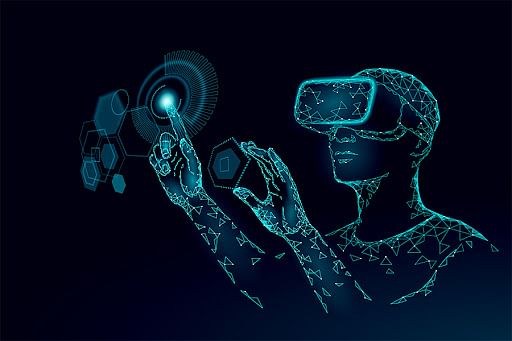
The Impact of Virtual Reality on Social Media Engagement
Have you ever imagined a world where you can hang out with your friends not just through your phone but in a super cool virtual space? Well, that’s what Virtual Reality (VR) is all about! Today, we’re going to dive into how VR is changing the way we interact on social media and why it’s such a big deal.
What is Virtual Reality (VR)?
Let’s start with the basics. Virtual Reality, or VR, is a technology that lets you experience a 3D world that isn’t real but feels like it is. You wear special glasses, called VR headsets, that make you feel like you’re actually inside a different world. It’s like stepping into a video game or a movie, but you’re the star!
Social Media and How We Use It
Social media is where we all hang out online. It’s how we share photos, videos, and chat with friends. We like posts, comment on them, and share things we love. But all this is mostly done on a flat screen, like on our phones or computers. It’s fun, but it’s kind of like looking through a window instead of being in the room.
Bringing VR into Social Media
Now, imagine if instead of just seeing your friend’s photo on your screen, you could actually be in a virtual room with them, chatting and playing games like you’re right there together! That’s what VR is starting to do with social media. Let’s explore how:
A. Immersive Content
When you use VR, you can see and interact with things in 3D. This makes everything much more exciting! Instead of just looking at pictures or videos, you can feel like you’re really there. For example, if you’re looking at a virtual tour of a zoo, it’s almost like you’re walking through it, not just watching it on a screen.

B. Virtual Spaces and Environments
With VR, social media can create entire virtual spaces. Think of it like a giant video game where you and your friends can hang out in a virtual park, play games, or even have virtual parties. These spaces are not limited by real-world boundaries, so the possibilities are endless!
C. Enhanced Communication Tools
In VR, you don’t just see people’s photos or videos; you can interact with their 3D avatars. Avatars are like digital versions of yourself that you can customize to look like you. You can talk, move around, and even give virtual high-fives! This makes talking to friends online feel more personal and fun.
How VR is Changing Social Media Marketing
Social media isn’t just for fun—it’s also a big deal for businesses. Let’s see how VR is making a splash here:
A. New Advertising Opportunities
With VR, companies can create ads that are much more engaging. Instead of just seeing an ad on your screen, you can step into a virtual store or try out a product in a 3D space. This makes advertising a lot more interesting and memorable.
B. Enhanced Product Demonstrations
Imagine you’re looking at a new video game, and instead of just reading about it, you can try it out in VR. That’s what companies are starting to do. They let you experience their products in a virtual world, so you get a better idea of what you’re buying.
C. Engaging Campaigns and Events
Companies can also use VR to host virtual events or special campaigns. For example, they might have a virtual concert where you can attend from your living room. These kinds of events are not only fun but also let more people join in, no matter where they are.
Challenges and Things to Think About
Even though VR is super exciting, it’s not without its challenges:
A. Technological Barriers
VR equipment can be pretty expensive, and not everyone has access to it yet. Plus, VR technology is still improving, so sometimes it can be a bit glitchy.
B. Privacy and Security Concerns
Just like with regular social media, there are concerns about privacy in VR. It’s important to make sure your personal information is safe while you’re exploring these virtual worlds.
C. Content Creation and Quality
Creating high-quality VR content can be challenging. It requires special skills and equipment to make sure everything looks and feels real.
Examples of VR in Social Media
Let’s look at some cool examples where VR is already making waves:
A. Facebook Horizon
Facebook Horizon is a VR social platform where you can create your own virtual space, meet friends, and play games. It’s like having your own virtual world where you can hang out with others.
B. VRChat
VRChat is a place where you can chat with people from all over the world in a virtual environment. You can create your own avatar, explore different worlds, and make new friends.
C. Other Notable Examples
Other platforms are also starting to use VR in exciting ways. For example, some companies are creating virtual tours of real-world places, like museums or landmarks, so you can explore them from home.
What’s Next for VR and Social Media?
So, what does the future hold? Here are some things to look forward to:
A. Advancements in VR Technology
VR technology is improving all the time. We can expect better headsets, more realistic graphics, and even more ways to interact in virtual spaces.
B. Future Social Media Engagement
As VR becomes more common, social media will continue to evolve. We might see even more immersive experiences and new ways to connect with friends.
C. Potential for Growth and Innovation
The possibilities with VR are endless. As technology advances, we can look forward to more creative and exciting ways to use social media.
Conclusion
Virtual Reality is changing the way we experience social media. By mixing static images with interactive 3D environments, VR is making online interactions more engaging and fun. Whether it’s attending virtual events or exploring new worlds, VR is opening up new opportunities for how we connect with others.
Ready to explore more about social media trends and get awesome curated content? Head over to MiviBzzz.com to discover exciting insights and tools that can help you stay ahead in the world of social media. Dive in and see how you can make the most of these amazing new technologies!
